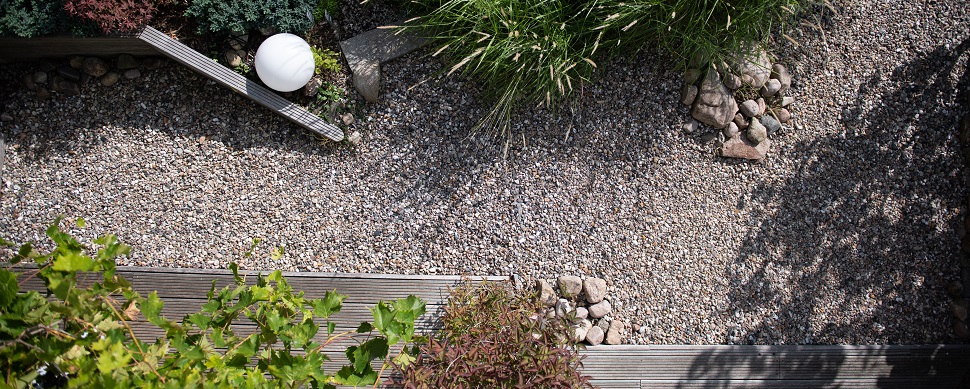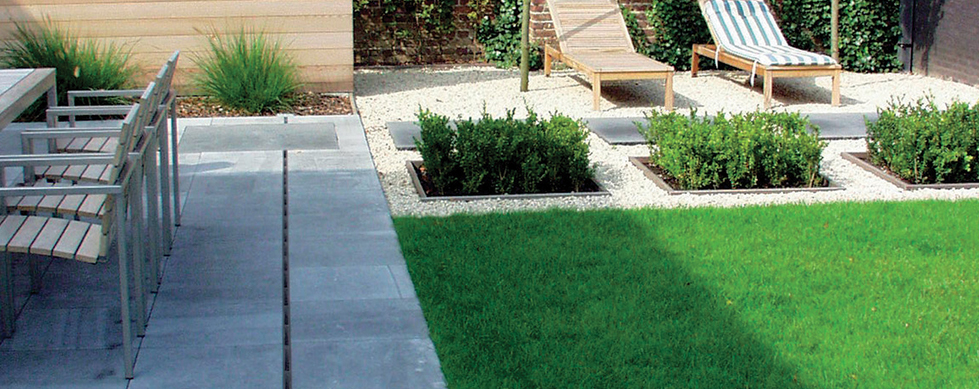
Making sustainable attainable – 10 simple ways to eco-friendly garden design.
Just a little patch of garden – that’s often all we need as human beings. Somewhere to grow one or two plants, attract a few bees and generally give us a sense of wellbeing. But one thing has made those outdoor spaces not only important for our welfare, but vital for the future of the planet – climate change.
Take a city like London. 36% of the capital’s area is green spaces; that’s not just parks, it’s gardens. Projected figures show London is likely to see increases in summer and winter temperatures of 5-6°C by 2050* Yet, during a heatwave, natural green spaces can help reduce urban temperatures by 2°C.
Those same outdoor spaces are also critical to the management of water. As climate change brings us more dramatic weather events, we need to ensure more rainwater goes back into the ground instead of overwhelming sewers.
Okay, lecture over. Now, for some positive news. What all this has created is a growth in sustainable garden design. More and more customers are tuning in to the benefit of creating outdoor spaces that do more than just look good, but manage water more efficiently and create areas for flora and fauna to thrive. So below, we’re sharing ten ways for you to build a little more sustainability into your next landscaping or garden design project.
1. Encourage infiltration.
The most sustainable solution for runoff rainwater is getting it back into the soil instead of down into the sewer. As our towns and cities sprawl to accommodate more homes (and the amenities and car parks to support them), we lay more hard, impermeable surfaces over natural, grassy or wooded permeable surfaces. Water moves quicker on non-permeable surfaces and floods back into streams (taking pollutants with it) before evaporating away. On the other hand, water that infiltrates the soil seeps slowly into the earth as groundwater and finds its way back into the system in a far more sustainable way. It’s one reason soakaways are now an important part of any housing development. ACO StormBrixx is a soakaway system made from recycled plastic, so it could provide you and your customers with an eco-friendly and effective long-life solution to that fast-moving runoff water.
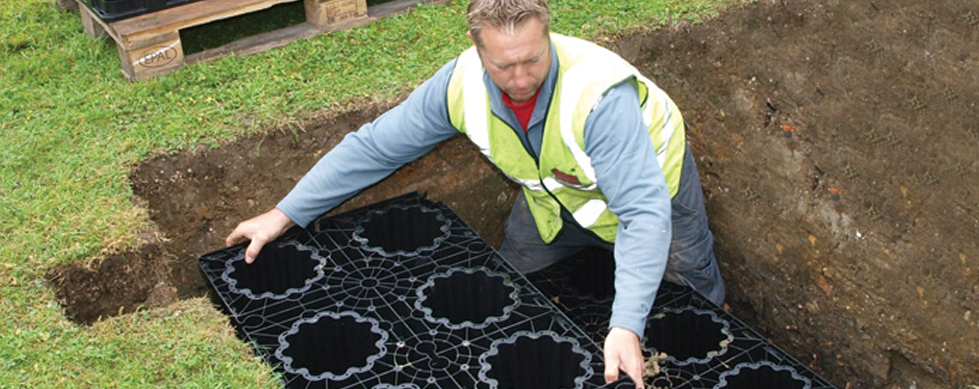
2. Explore the possibility of a rain garden
Why let runoff from a roof or patio go down the drain when you can use it to create a rain garden? This exploits a shallow area of ground or natural depression and should be planted with species that can stand waterlogging for up to two days. Choose a well-drained area 5m or more from a building and use channel drainage (or dig a natural rill) to get the water from the downpipe to the dip. A rain garden will absorb up to 30% more water than a lawn and can remove up to 80% of sediments from rainwater runoff – and by slowing down heavy rainfall it will reduce soil erosion too. You can find out more from these links;
3. Plant for climate change.
Alternating prolonged downpours and droughts appear to be something we have to be prepared for, so the sustainable garden must do the same. The RHS (Royal Horticultural Society) surveyed the gardening public and horticultural professionals in an effort to discover plants that survived (or even thrived) in wet winters and dry summers. Geranium Rozanne and Hemerocallis Burning Daylight were two examples of brightly coloured perennials that fitted the bill. Follow this link for more on the subject;
4. Plan for power.
We all know beautiful outdoor spaces only stay beautiful with maintenance – no matter how minimal. That means your customers will need to pick up power tools like mowers, strimmers and hedge cutters not long after your job is done. Planning outdoor power points in specific areas allows for the use of electric mowers and power tools – so much cleaner than their petrol-powered counterparts and much more in keeping with a sustainable theme.
5. Encourage wildlife
There are few customers who don’t love seeing wildlife in their gardens – especially if they’re endangered species like newts or those in decline such as hedgehogs or bats. Water features, like ponds fed from rainwater runoff, are obvious ways of attracting flora and fauna – but not every customer will be delighted by the idea of open water, especially if they have small children. This is where wildlife refuges can play a part in garden design. ACO’s refuges cater for creatures great and small – and very small – from hedgehogs to snakes to insects. And, as no metallic reinforcement is used in the product’s manufacture, animals aren’t disorientated by the distortion of magnetic fields.
For more on wildlife-related issues, see these other useful links;
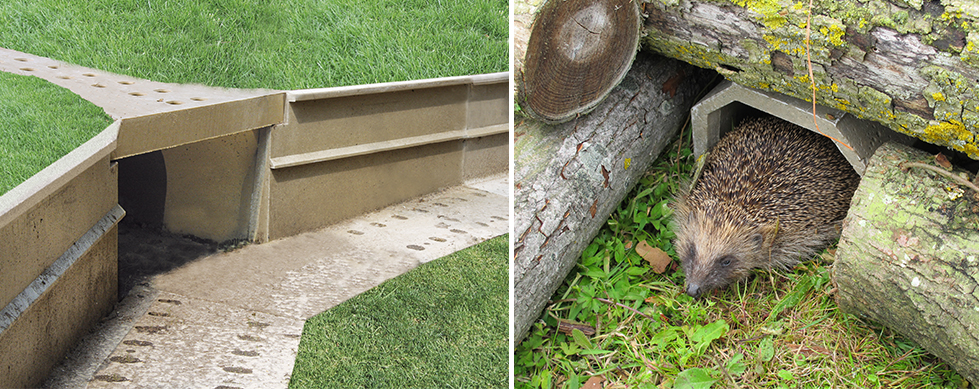
6. Go for gravel
We’re back to the permeable/impermeable story again. Choose gravel instead of concrete for paths and driveways, and the result not only looks smart, it allows rainfall to infiltrate back into the ground as a SuDS-friendly installation. Now, you might be thinking, “But what about the drifting and rutting you often get with gravel?” No longer a problem with products like the ACO GravelGuard eco tile. This stabilises gravel, making the system ideal for driveways and paths. Made from recycled materials, its incorporated geo-textile helps reduce weed growth, so your customers will also need to use fewer environmentally unfriendly weed killers.
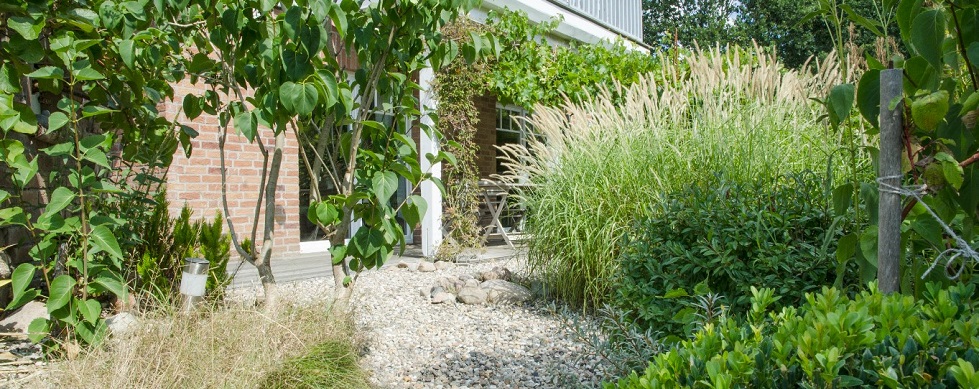
7. Channel water exactly where you want it.
Sometimes a permeable surface just isn’t an option, but that doesn’t mean rainwater can’t be managed sustainably. As we’ve mentioned before, during very heavy bursts of rain, runoff water travels rapidly over hard surfaces, overwhelming sewer systems and pushing pollutants into our rivers and seas. Well-designed drainage channels on the other hand, slow down run-off and help manage water more efficiently. They can also do it beautifully, creating architecturally attractive borders for patios, or even ‘invisible’ drainage you can drive over. ACO has an extensive range of channel drainage designs that allow you to direct water exactly where you (and the planners) require it to.
8. Use sustainable materials
Installing decking and other garden features is an area where careful choice can mean the difference between sustainable and non-sustainable. Tracking down products made from recycled materials is now getting easier thanks to internet searches and manufacturers providing more information on the subject on their own websites. ACO’s own polymer concrete channels are made from Vienite®, a polymeric-based recycled material that contains post-consumer waste previously destined for the UK’s landfill sites. You can find more about it here;
9. See the light
Thanks to new technology and lifestyle programmes like Grand Designs, lighting is playing an increasing role in garden design. With no end of solar-charged lighting products or low-wattage LEDs available, this is a great way for your customers to appreciate your efforts even at night – using the minimum of energy.
10. Source products from a Net Zero Carbon Business Champion
Recently, companies from across the construction industry have been coming together and declaring their commitment to CO2nstructZero – the industry’s response to meeting the challenges of climate change. It enables firms in the construction sector to be role models in the drive to reduce carbon emissions in both the delivery and operation of the built environment. 14 companies, including ACO, have initially been selected by the Construction Leadership Council (CLC) as business champions, so this will be an interesting space to watch. In future, it should help landscapers and contractors know that they’re sourcing products from businesses that take sustainability seriously.
This is just the start
The above are just a few of the ways to bring sustainability into your garden design – but we’ve barely scratched the surface. In future, we’ll be looking at more ways ACO products can help you create sustainable spaces. Or for more on the subject right now, download our eBook, Sustainable Design – Finding the Real Growth in Gardens go to:
